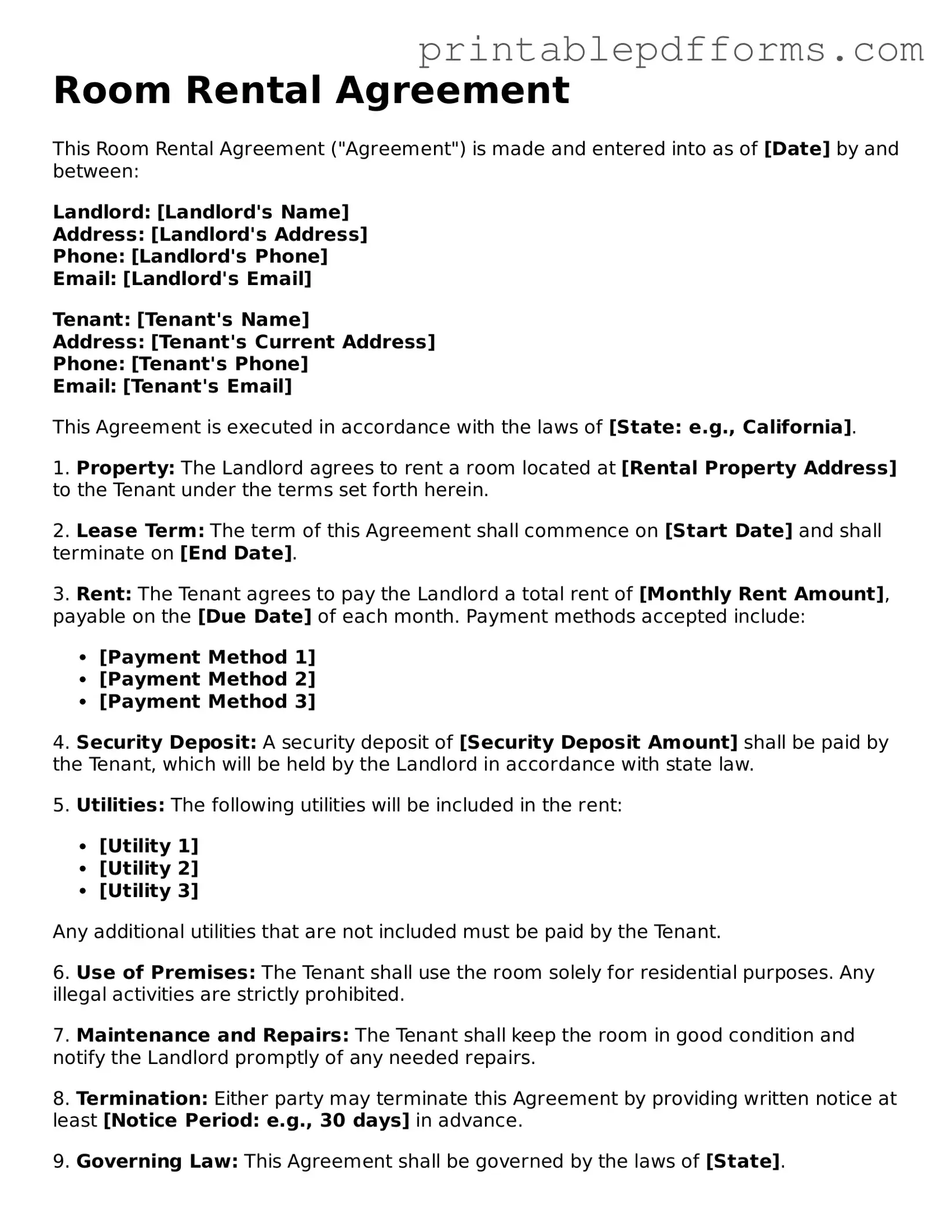Room Rental Agreement
This Room Rental Agreement ("Agreement") is made and entered into as of [Date] by and between:
Landlord: [Landlord's Name]
Address: [Landlord's Address]
Phone: [Landlord's Phone]
Email: [Landlord's Email]
Tenant: [Tenant's Name]
Address: [Tenant's Current Address]
Phone: [Tenant's Phone]
Email: [Tenant's Email]
This Agreement is executed in accordance with the laws of [State: e.g., California].
1. Property: The Landlord agrees to rent a room located at [Rental Property Address] to the Tenant under the terms set forth herein.
2. Lease Term: The term of this Agreement shall commence on [Start Date] and shall terminate on [End Date].
3. Rent: The Tenant agrees to pay the Landlord a total rent of [Monthly Rent Amount], payable on the [Due Date] of each month. Payment methods accepted include:
- [Payment Method 1]
- [Payment Method 2]
- [Payment Method 3]
4. Security Deposit: A security deposit of [Security Deposit Amount] shall be paid by the Tenant, which will be held by the Landlord in accordance with state law.
5. Utilities: The following utilities will be included in the rent:
- [Utility 1]
- [Utility 2]
- [Utility 3]
Any additional utilities that are not included must be paid by the Tenant.
6. Use of Premises: The Tenant shall use the room solely for residential purposes. Any illegal activities are strictly prohibited.
7. Maintenance and Repairs: The Tenant shall keep the room in good condition and notify the Landlord promptly of any needed repairs.
8. Termination: Either party may terminate this Agreement by providing written notice at least [Notice Period: e.g., 30 days] in advance.
9. Governing Law: This Agreement shall be governed by the laws of [State].
IN WITNESS WHEREOF, the parties have executed this Room Rental Agreement as of the day and year first above written.
Landlord Signature: ________________________ Date: _______________
Tenant Signature: ________________________ Date: _______________
